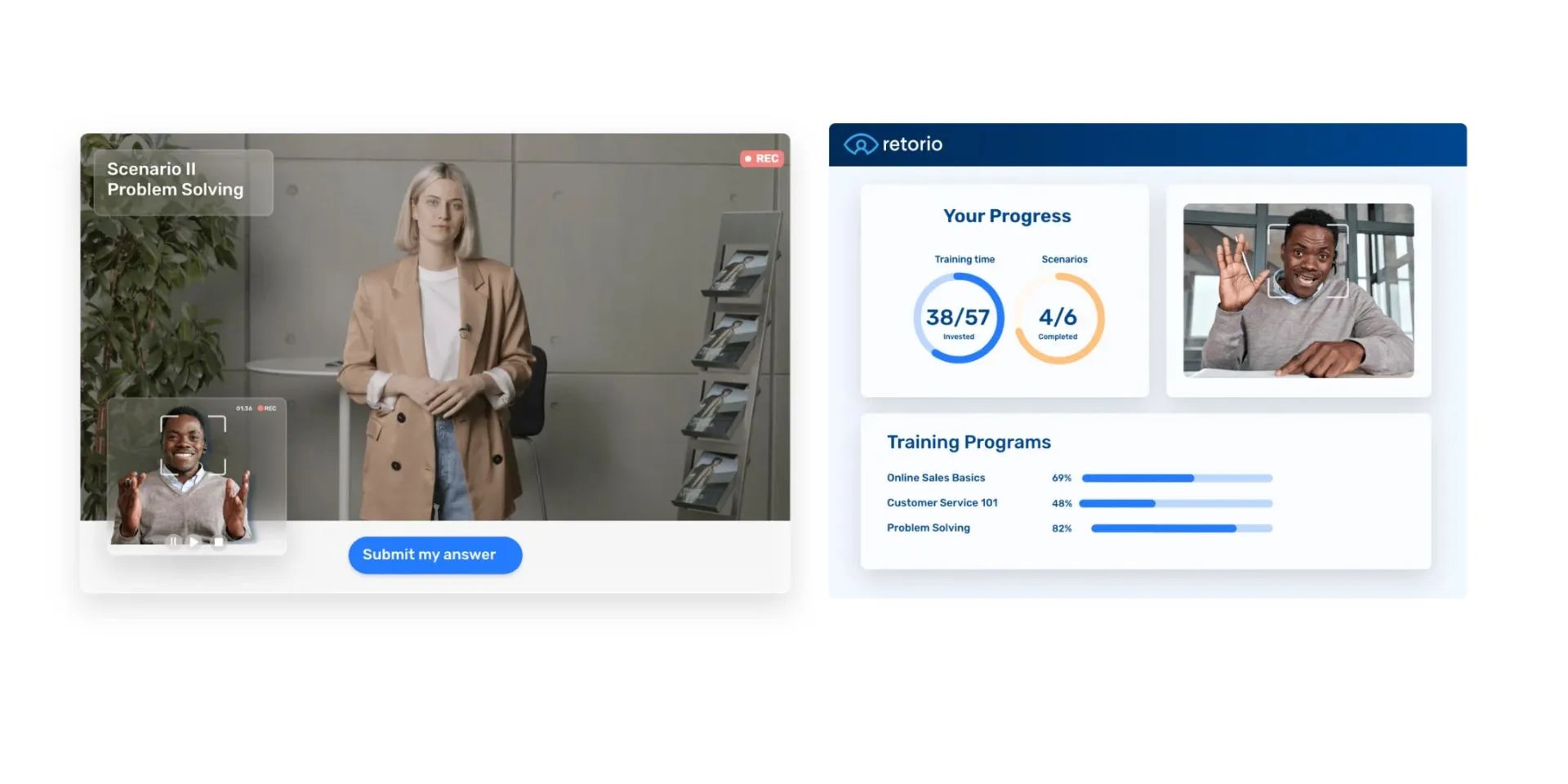If you have a look at the reasons - they aren't as shocking as you may think.
43% of new hires say their role did not meet their expectations, while a negative onboarding process has increased the motivation for new hires to look for other jobs by 2x. Now, the key is to get your new hires to want to stay at your company, not to look for another position.
Starting a new job is just as overwhelming for the new employee as it would be for organizations to plan them. The good news is, it does not have to be overwhelming for either party much longer.
What does your orientation process look like? How do you prepare for new employee orientation and how do you set up for employee orientation program so that new hires feel welcomed, well-integrated, and motivated to become part of your organization's success?
This blog post covers it all for you. Read on to find out how you can build a new hire orientation that will increase productivity and retain new hires.
What's in this post:
What is new hire orientation?
New hire orientation is a one-off process of integrating new employees into the company culture, and the responsibilities of their new job. It usually gives new employees a high-level overview of your company, and the team, and leads them into the onboarding training plan which will dive them into the company policies, and best practices for how they can perform their tasks well.
The terms orientation and onboarding often get mixed up. Onboarding is an ongoing process that begins during the hiring process and lasts until each new hire is settled well into their role. On the other hand, orientation is only a part of the onboarding process.
New hire orientation allows organizations to give new employees their very best impression of what it is like to work at your company, and why they should stay.
Benefits of new hire orientation
It's easy to see how new hire orientation could benefit new employees, but how would it benefit your company as a whole?
From boosting employee job satisfaction to increasing new hire productivity, here are a couple of reasons why new hire orientation is important for your company:
-
Begin your employee lifecycle off on the right foot by ensuring that all new hires have a smooth transition into their onboarding training process and get a good first overview of the company dynamic.
-
Gives you an opportunity to set your expectations clearly with new employees and discuss any questions and concerns right from the start.
-
Accomplishing a two-in-one: Reducing employee turnover and enhancing job satisfaction by making new hires feel welcomed and part of the team right on their first day.
-
Ensuring that all the important information and resources have been distributed to each new employee so that they are well-equipped and become more engaged.
-
Build a strong rapport with new hires, and continue to build positive relationships which helps to cultivate trust in the workforce.
How to prepare for new hire orientation
Preparing for a new hire orientation helps to make the employee orientation more productive and engaging. As it is with anything related to onboarding, it is always a good idea to prepare well in advance.
To have an effective orientation program, here are a few things you can do to prepare for your new hire orientation process:
-
Have a new hire orientation checklist: This one is a given. Especially if you enjoy ticking things off a list, having an orientation checklist will make sure that the employee orientation runs smoothly. Some of the tasks that you can include in an employee orientation checklist are handing over all important new hire paperwork, who to introduce, going through the company policies and procedures, what to discuss when it comes to benefits and compensation, and what to show new hires in their new office.
-
Share the schedule in advance: Just as you have an orientation checklist that will give you an outline of what you need to accomplish with your new hire on their first day, you should also prepare an orientation schedule that gives both you and the new employee an overview of the employee onboarding process, company's policies, the company's culture, and what their first week will look like. This will help you stay organized, and keep new hires on track.
-
Have all necessary equipment and resources ready: This goes hand-in-hand with having an orientation checklist - it will also remind you to hand over all the equipment that the new hire needs to start their work immediately.
-
Inform team members: This is giving your team a heads-up about their new team member arriving so that they are ready to give the new employee a warm welcome. Additionally, informing your team will also be necessary for getting certain employees prepared to help the new hire acclimate to their role. Having seasoned employees be part of your orientation program will be beneficial in helping your team members build stronger connections with one another.

How to set up a new hire orientation program
Bringing in new hires into the team is not necessarily cost-friendly. On average, companies spend $986 annually, just to train new employees and that does not include the cost of hiring or costs that come with waiting for a position to be filled.
A strong hire orientation program is essential when looking into retaining talent and boosting employee engagement rates.
Employees who have an excellent onboarding process are 69% more likely to stay with the company after three years.
Here are 5 steps you can take to develop a new employee orientation program that will make the process positive and productive.
Give new employees a warm welcome on their first day
While this may seem like an obvious step to take, it is arguably one of the most important ones. This is because companies are setting up the stage to show new hires what they can expect and offering them a first taste of what their future at your company will be like.
Therefore, your goal here is to make a great first impression and show them the dynamic of their new team. Here are a few ways that you can make your new hires feel welcome on their first day:
-
Introduce them to their new team members and allow space and time for them to have conversations with their new colleagues to get to know them better.
-
Give them an in-depth office tour. No one likes to feel lost in their own office, so take your time to show them the facilities, rooms, and areas that will help them feel comfortable.
-
Offer them a welcome package. A welcome package can include a welcome letter, an employee handbook that also includes their schedule for the next days or weeks, a document containing relevant employee information, a company-branded water bottle, and any technology equipment they need such as a laptop, tablet, phone, etc. If you are feeling extra fancy - throw in some office snacks in there as well.
-
Take them out for a company lunch and take that chance to get to know them better outside of an office environment.
More importantly, giving your new hires personalized attention and letting them feel at home is a great way to enhance the orientation process and motivate them to be productive right from the start.
Go over the company's mission and policies
It is vital for new employees to be informed of company policies to avoid the risk of committing a mistake or placing the company in a difficult position. Therefore new hires should be aware of the policies right from the start. The basics of this should cover parking, how they can sign in (if applicable), breaks, office etiquette, and any other policies regarding technology or equipment that are important for every employee to follow.
New employees should also get to know the company's mission by knowing what the objectives are, what the company is working towards, and how they will help to contribute to this growth and success. This gives them a clear overview of their journey with your company and encourages them to think long-term.
Communicate expectations and job description
Just as new hires need to be aware of the company policy and procedures, they should also get in touch with what the company and manager expect of them. This will help to build a sense of connection within the company.
Therefore, during the first days and weeks, make sure that you invest time in explaining the new hire's job responsibilities and tasks to them as clearly as possible. This can be supported with the usage of an employee handbook so that they have a document to refer back to.
This process also involves reinforcing what was discussed during the interview process and going through the job description once again to see if they have any questions or concerns before they dive in.
When new hires gain a clear understanding of what is expected of them, and what their job position entails, they will be able to perform better and increase productivity and efficiency. Moreover, well-informed employees are more engaged and motivated.
Set SMART goals and create an action plan
During their first week, managers and supervisors should set up a meeting with the new hires to have an in-depth discussion on the responsibilities of the role, and the objectives that are to be met.
This is a crucial step in moving forward. During this step, both the manager and the new hire should sit down and collectively set SMART (Specific, Measurable, Attainable, Relevant, Time-bound) goals that are aligned with the company's objectives. This will help both parties to see where performance is headed, and get a clear idea of which learning and development measurements should be tracked to measure progress.
Once the SMART goals have been set, it is time to create an action plan. An action plan in this step refers to the actions that the new hire will now take to begin achieving their goals. This can be through developing a new hire training plan or connecting them with a mentorship or coaching program for extra guidance.
Having an action plan allows managers to see which skills the new hire needs to perform their job well, and begin to identify their strengths and areas for improvement.
An action plan will also help new hires to get acclimated to their new roles much faster. It begins to bridge the time-to-competency gap which boosts productivity and allows for new hires to contribute to the company's success faster.
Schedule regular check-ins
Last, but not least - managers should schedule frequent follow-up meetings and conversations with new hires. This is important for managers to stay up to date on how the new hires are progressing in their work. It also gives new employees a chance to discuss any challenges, raise concerns, and ask questions. Additionally, it keeps the relationship between the new employee and manager strong and consistent, which helps to build trust.
Especially in the first few months, having regular check-ins with your new employees will give you a chance to see whether they are headed in the right direction if their goals need to be changed, and what training should be included in the action plan.
New employee orientation ideas for remote employees
A remote orientation process does not have to be any less efficient than an in-person orientation. As hybrid work is gaining popularity as we slowly head into 2024, knowing how you can develop an efficient remote new hire orientation that delivers a positive and engaging experience is just as important.
Here are a few tips on how can navigate virtual orientation just as effectively as on-site orientation:
-
Replace your in-person office tour with tools such as Slack, Teams, or Zoom to give new employees access to relevant remote training resources. This will help them to feel like they are receiving a virtual welcome package and feel just as involved in the company from afar as they would in person.
-
Make sure that virtual new hires are aware of their remote working benefits such as being able to request home office equipment.
-
Implement virtual onboarding by hosting a "get-to-know" call with the team.
-
Integrate new hires into all the upcoming social events, and company-wide meetings by keeping them in the loop through online calendars. This helps them to feel part of the company even if they are unable to participate.
-
Introduce new hires to the company and department with a celebratory introduction e-mail.
Having a strong new hire orientation program will help your organization cultivate stronger trust, foster a productive workforce, and streamline your company's path to success. One of the best ways to streamline your processes, whether it is onboarding or training is through AI-powered technology.
Retorio's AI Coaching platform provides organizations across industries with a library of training. From leadership training to after-sales training, Retorio's AI-powered training platform delivers training that matters today by strengthening self-awareness, to prepare your organization for tomorrow.

With AI video simulations that immerse you in real-world challenges and everyday scenarios, Retorio's training platform tracks progress and provides real-time personalized feedback that caters to each individual's unique strengths, learning styles, and needs to make your learning and development journey effective and scalable. All while providing a psychologically safe space to train in!
If you're looking to improve your team's skills and provide them with personalized coaching, consider trying out Retorio today!
FAQ
The usual length for new hire orientation would last from approximately three hours to a full workday, depending on your schedule. However, this can also vary from organization to organization. It is important to take time with your orientation process, which is why the duration of it should be no less than three hours. This allows you to cover a thorough office tour, proper introductions, and allow time for your new hires to set up their work environment, and go through important paperwork with their hiring manager or supervisor.
An onboarding checklist is a way for hiring managers to efficiently guide new employees through their first day and to make sure that all important steps of an onboarding process have been completed. This makes the onboarding process productive and efficient and provides a clear starting point for procedures that are specific to each job role.



